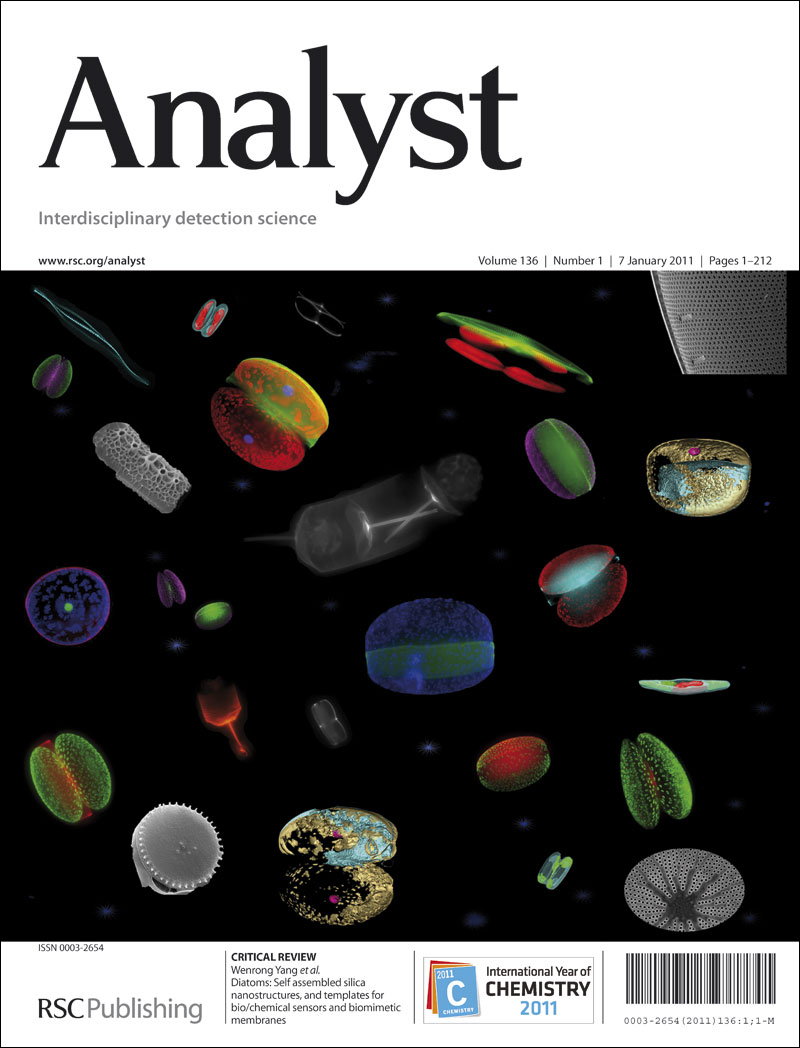纤维素三(3,5-二甲基苯基氨基甲酸酯)修饰的介孔中空聚合物微球对萘普生异构体的手性识别
IF 3.6
3区 化学
Q2 CHEMISTRY, ANALYTICAL
引用次数: 0
摘要
以纤维素三(3,5-二甲基苯基氨基甲酸酯)(CDMPC)对介孔中空聚合物微球(M-HPMs)进行修饰,所得的手性中空聚合物微球(C-HPMs)用于萘普生(NPX)异构体的光谱手性鉴别。由于CDMPC的固有手性和M-HPMs的介孔结构,NPX异构体被C-HPMs吸附后在紫外光谱上的吸光度有显著差异。对吸附时间、CDMPC与M-HPMs的质量比、NPX浓度等参数进行了优化,以达到对NPX异构体的最高识别效率。与羧甲基纤维素钠修饰的M-HPMs和CDMPC直接修饰的中空聚合物微球(HPMs)相比,C-HPMs对NPX异构体的识别效率更高。本文章由计算机程序翻译,如有差异,请以英文原文为准。
Spectroscopic chiral discrimination of naproxen isomers with cellulose tris(3,5-dimethylphenylcarbamate) modified mesoporous hollow polymer microspheres
Mesoporous hollow polymer microspheres (M-HPMs) are modified with cellulose tris(3,5-dimethylphenylcarbamate) (CDMPC), and the obtained chiral hollow polymer microspheres (C-HPMs) are utilized for the spectroscopic chiral discrimination of naproxen (NPX) isomers. Thanks to the intrinsic chirality of CDMPC and the mesoporous structure of M-HPMs, the NPX isomers exhibit significant differences in their absorbances on the ultraviolet (UV) spectra after being adsorbed by the C-HPMs. Several parameters including adsorption time, mass ratio of CDMPC to M-HPMs, and NPX concentration are optimized to achieve the highest discrimination efficiency for the NPX isomers. Compared with the M-HPMs modified with sodium carboxymethyl cellulose and the hollow polymer microspheres (HPMs) directly modified with CDMPC, the C-HPMs show higher discrimination efficiency for the NPX isomers.
求助全文
通过发布文献求助,成功后即可免费获取论文全文。
去求助
来源期刊

Analyst
化学-分析化学
CiteScore
7.80
自引率
4.80%
发文量
636
审稿时长
1.9 months
期刊介绍:
"Analyst" journal is the home of premier fundamental discoveries, inventions and applications in the analytical and bioanalytical sciences.
 求助内容:
求助内容: 应助结果提醒方式:
应助结果提醒方式:


